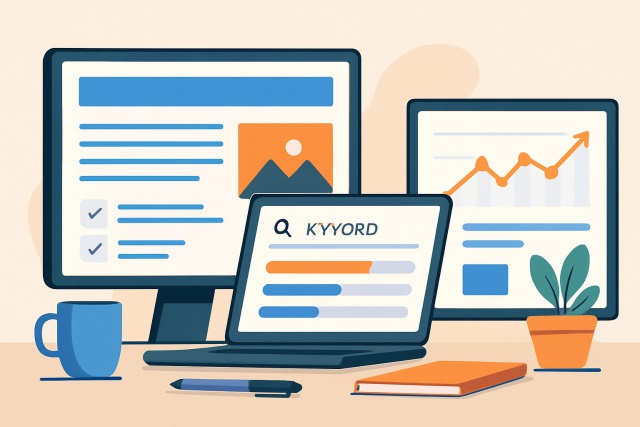Understanding Channels of Distribution to Improve Sales


Channels of distribution act as vital bridges that carry a product or service from the producer to the final customer. Understanding how these channels work can genuinely improve a business's sales by widening reach, smoothing operations and increasing customer satisfaction.
So, What Exactly Are Channels of Distribution?
Channels of distribution are basically the routes goods or services follow as they make their way from producers into the hands of consumers. This journey involves behind-the-scenes players like wholesalers, retailers and agents who ensure the product reaches the final buyer without a hitch.
- Channels of distribution map out the journey products take to reach consumers.
- Direct channels cut out middlemen and connect producers straight to customers.
- Indirect channels involve wholesalers, retailers and agents who help products reach the market.
- Wholesalers buy in bulk and pass goods to retailers or other businesses, playing a big-picture role.
- Retailers sell products directly to end consumers, closing the distribution chain.
Think of channels of distribution as a sprawling network of roads. Just like these roads hustle to get packages from a warehouse right to your doorstep, distribution channels shuttle products from factories out to stores or customers.
Different Types of Distribution Channels
Let's dive into the various ways products find their way to customers—because, trust me, there is more than one path to get there.
There are a few different types of distribution channels floating around—think direct, indirect, dual and reverse. Each one suits particular business needs like a glove. These channels vary based on how products make their way to consumers and whether middlemen play a role.
| Channel Type | Description | Example Industries | Pros | Cons |
|---|---|---|---|---|
| Direct | The producer sells straight to consumers without middlemen | Technology, Handmade goods | Keeps full control over sales and customer experience, giving a personal touch that many customers appreciate | Comes with higher logistics and marketing costs, which can be a bit of a headache to manage |
| Indirect | Products move through middlemen before reaching customers | FMCG, Apparel | Expands market reach and shares some costs, easing the load a little | Offers less control and may cause channel conflicts, so it’s a balancing act to keep everyone happy |
| Dual | Uses both direct and indirect channels | Electronics, Automotive | Provides flexibility and reaches multiple markets, giving you the best of both worlds | Can create complexity in managing channels, requiring a bit of juggling to keep things smooth |
| Reverse | Returns or recycling move from customer back to producer | Electronics, Packaging | Helps sustainability efforts and resource recovery, which feels good and is increasingly important | Presents logistical challenges and can increase costs, making it something to plan for carefully |
Businesses usually pick their channel types based on factors like how complex their product is and the size of their target market and the resources they have.
The Main Players in Distribution Channels
- Breaking bulk is when channels take large batches of products and slice them into smaller bite-sized portions customers can handle without breaking a sweat.
- Creating assortments means pulling together a little bit of everything so customers don’t have to go on a wild goose chase to find exactly what they are after—all their favorites snugly in one spot.
- Facilitating contact bridges the gap between producers and consumers by smoothing out communication hiccups and making transactions feel almost effortless.
- Matching supply and demand is the delicate dance of tweaking products, quantities and delivery timings to fit the market’s ever-changing mood.
- Financing and risk-taking involves gutsy intermediaries who put up the cash for inventory and shoulder the uncertainties that come with it—it’s not for the faint-hearted.
- Providing market information is about channels gathering the inside scoop on what customers crave and keeping a close eye on what competitors are up to so everyone stays in the loop.
Distribution channels do more than just shuffle goods from point A to point B. They add real value by tweaking product quantities and bundling a handy mix of items. They also pass along invaluable feedback from the market.
Why Nailing Your Distribution Channels Can Seriously Boost Sales
A well-designed distribution channel not only ensures products get to customers in a flash but also comes with solid support—that extra bit that often nudges sales higher. Efficient channels have this knack for trimming costs and adapting on the fly to market shifts.
Expanding market coverage lets products reach a broader crowd across various locations, casting a wider net that can really pay off.
Improving convenience smooths out the purchasing process, making it quicker and easier—something customers definitely appreciate and that often leaves them coming back for more.
Boosting efficiency slashes operational costs, which not only fattens the bottom line but also paves the way for sharper pricing that can give a real edge in the market.
Building strong customer relationships through reliable service fosters loyalty and keeps people returning, a bit like having fans rather than just customers.
Being quick on the uptake with market changes keeps companies relevant and ready to jump on new opportunities before the competition even blinks.
A retail store’s success really hinges on having a distribution channel you can count on—one that keeps products stocked just when customers walk in looking for them. Without that vital link, even the most fantastic products often end up gathering dust instead of flying off the shelves.
Important Factors to Keep in Mind When Choosing Distribution Channels
- Getting a good handle on the target market's preferences and buying habits is key when picking the right channel. It is like knowing which dance moves will get everyone on the floor.
- The type and complexity of the product usually determine whether direct or indirect channels work better, like choosing a tool fit for the task.
- Distribution costs affect pricing and profits so it’s wise to balance those costs against the perks. Nobody wants surprises eating into the bottom line.
- Keeping a tight grip on brand image and pricing steers channel choices. This helps keep everything consistent and avoid messy mixed messages.
- The competitive landscape plays a big role in deciding if going exclusive or casting a wider net makes more sense. Sometimes less really is more; other times you need to cover all your bases.
- Technology, especially online platforms, opens fresh opportunities for distribution and can boost efficiency. It’s like getting a secret weapon in your corner.
Each factor plays a part in crafting a channel strategy that truly clicks with a company's goals and the market it is navigating.
Typical Challenges in Distribution Channels and How to Tackle Them Head-On
Distribution channels often face conflicts between intermediaries and communication hiccups. They also struggle with logistical headaches and clashing goals. Tackling these issues means rolling up your sleeves with clear coordination, using the right technology, and involving all stakeholders
Tackle channel conflict head-on by putting clear agreements in place, keeping communication lines open and regular and offering fair incentives that really motivate.
Boost communication by using centralized platforms and sharing updates often to keep everyone in the loop.
Harness modern logistics technology to make inventory management, order fulfillment and transportation smoother.
Provide training and incentives to intermediaries that help align their efforts with the company’s goals.
Practical Examples of Distribution Strategies That Actually Work (No Fluff)
Companies in FMCG, technology and retail have often witnessed impressive sales growth by tailoring their distribution strategies just right. Whether leaning on traditional wholesale networks or diving into cutting-edge e-commerce tools, these businesses clearly demonstrate how a smart and thoughtful approach to channel management can really move the needle

Visual representation of multiple distribution channels illustrating their role in delivering products from producers to customers.
Successful strategies usually lean heavily on strong partnerships with channel members, alongside smart use of technology platforms to boost both reach and responsiveness. Technology companies often mix channel analytics with customer data to fine-tune product availability and promotional efforts, making sure things land just right.
How to Build an Effective Distribution Channel Strategy (Without Losing Your Mind)
Really get to know your target market's needs—it’s the best way to paint a clearer picture of their buying habits and what floats their boat.
Take a good hard look at your product’s features and how tricky it might be to use. Also consider what kind of handling it demands because sometimes the details make all the difference.
Weigh up different channel options while keeping an eye on their reach, cost and how much control you can realistically hold on to.
Craft a channel structure that plays to your company’s strengths and taps into what the market is actually asking for. Hitting that sweet spot is key.
Roll out the strategy with roles and responsibilities as clear as day and don’t forget smooth communication processes because they really grease the wheels.
Keep a close watch on progress and be ready to pivot when the market throws a curveball. Flexibility often wins the race.
Creating a strong distribution channel strategy usually kicks off with market research to zero in on where customers are hanging out and interacting with the brand. From there, it’s worth taking a close look at product details like whether it’s perishable or needs customization to make sure everything fits just right. Once you’ve sized up the potential channels of distribution, the trick is to find the sweet spot between keeping costs in check and reaching the right markets while still holding onto the control you need. Pulling off the plan smoothly hinges on clear communication, solid training and leveraging handy tools like SEO platforms such as Moz Pro or Mangools to boost your digital marketing and really connect with your audience.
Unlock Digital Marketing Success with Moz
Struggling to optimize your online presence? Moz is the ultimate Internet Marketing solution, empowering businesses with powerful SEO tools, insightful analytics, and expert guidance. Elevate your digital strategies and outshine the competition.
- Boost organic traffic with data-driven SEO tactics
- Enhance content marketing with expert recommendations
- Gain a competitive edge with comprehensive link analysis








